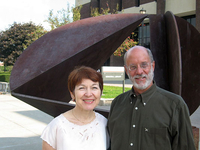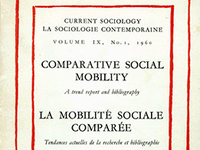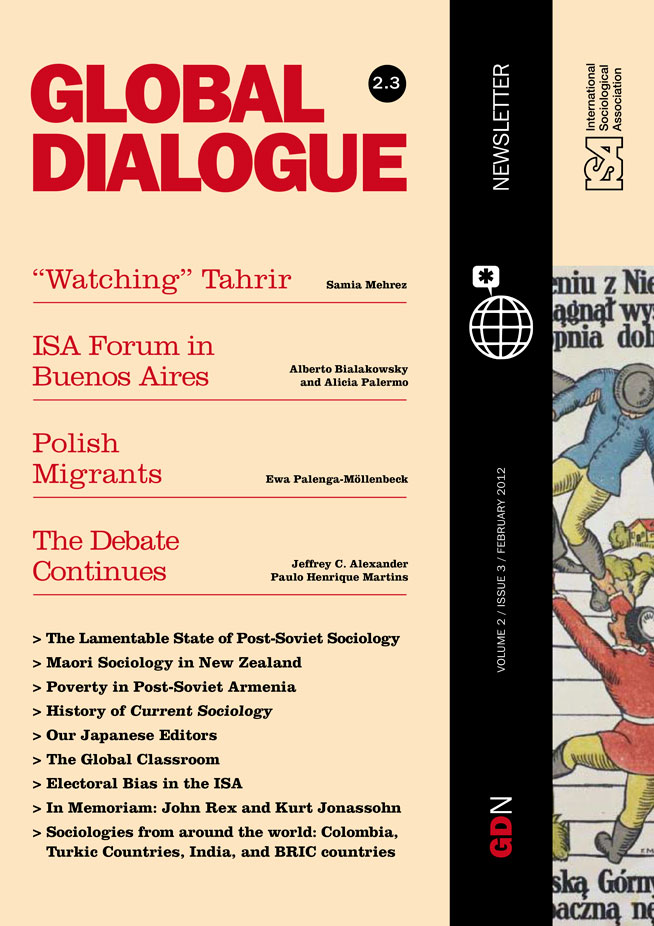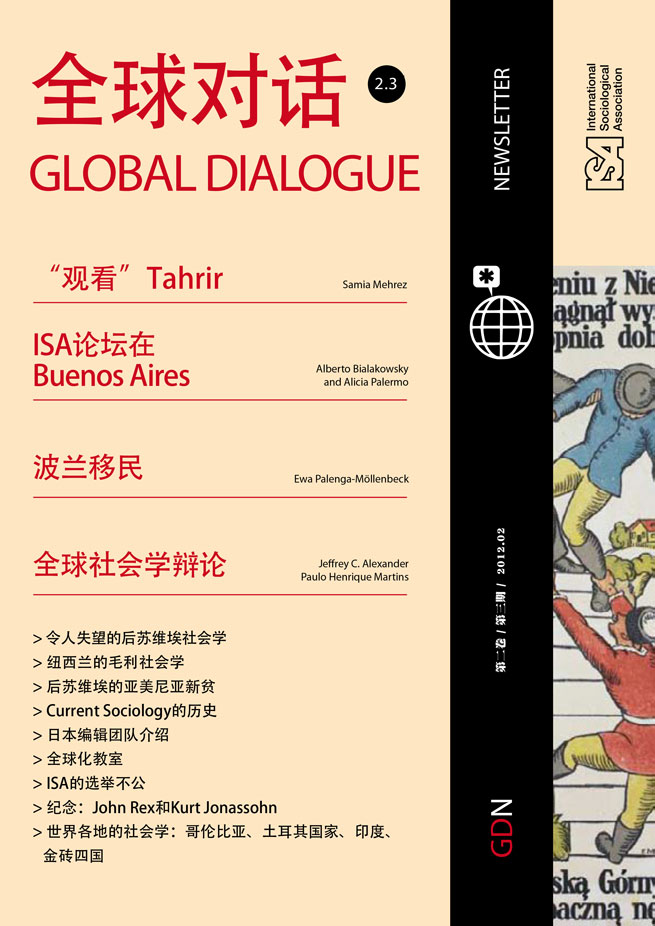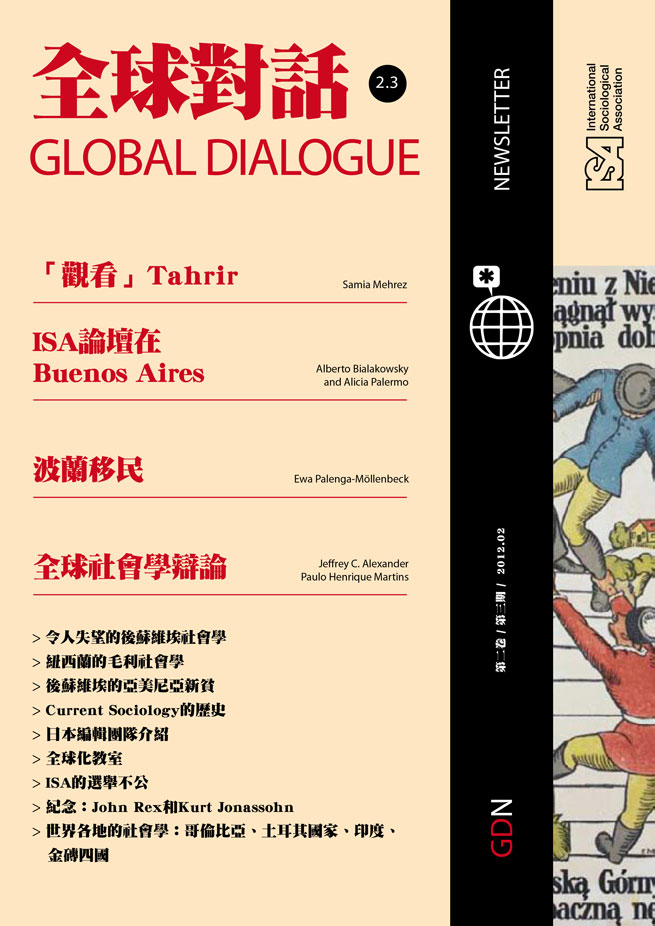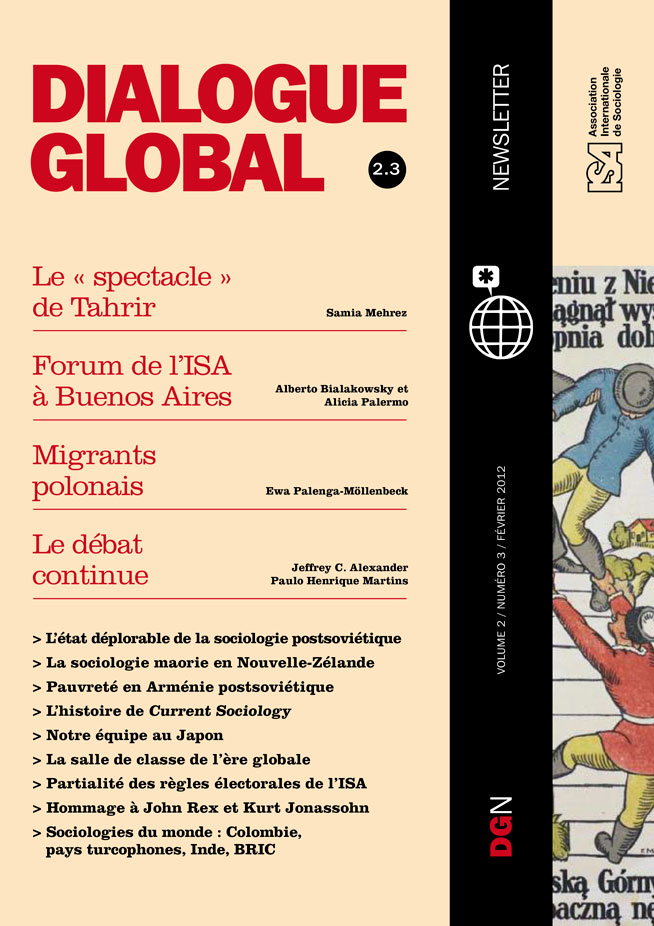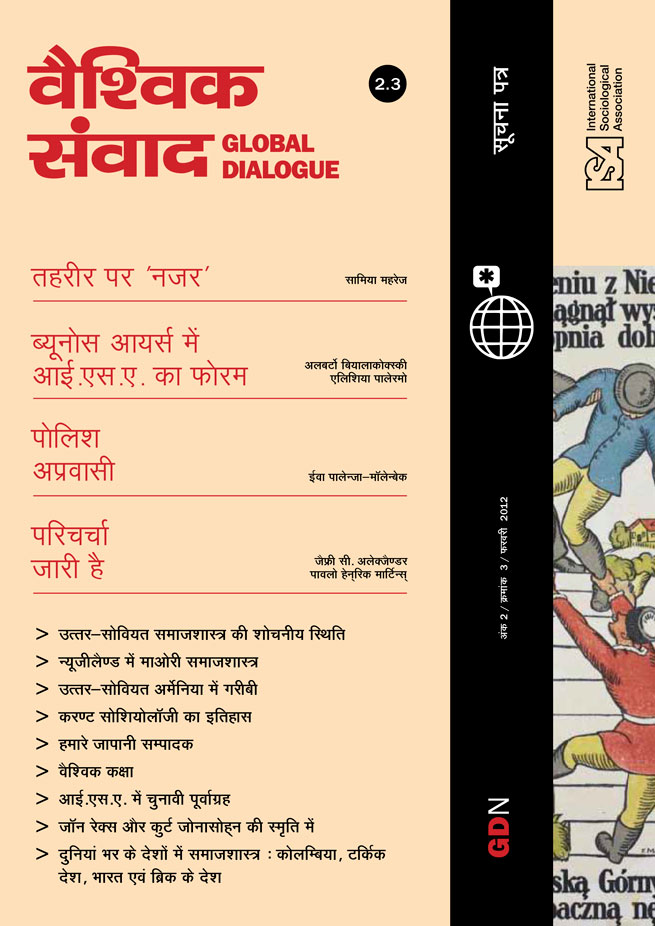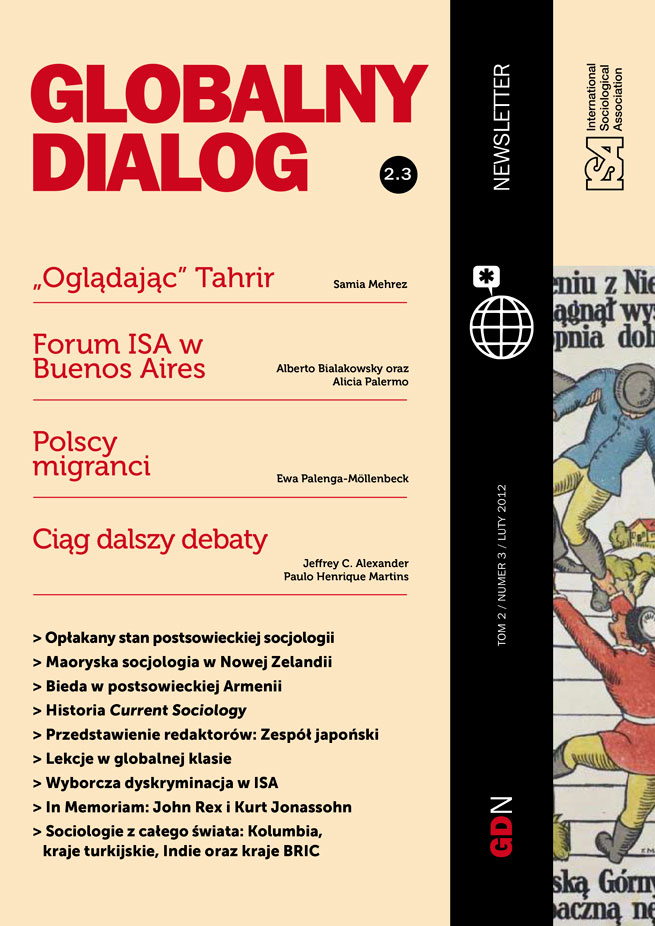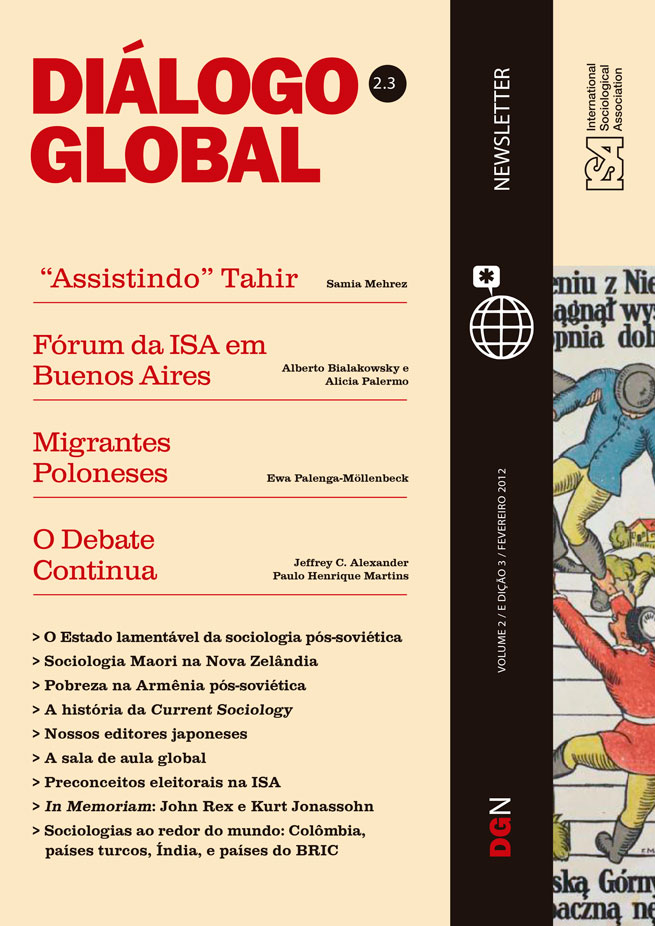A great step forward was made by the ISA at the World Congress in Brisbane in 2002, when it was decided for the first time to elect a Vice-President for National Associations. But the procedural norms were drawn up somewhat hastily. The intention was, of course, to make immediate provision for the position. Instead of postponing the vote until the following congress (Durban), the Indian Sujata Patel was elected as first Vice-President for National Associations (succeeded in 2006, at Durban, by the US-based Englishman Michael Burawoy, and in 2010, at Gothenburg, by the South African Tina Uys). The three sociologists elected to date have all been worthy of their position and have done an excellent job.
Their elections have been the result of a broad-based electorate, the Assembly of Councils, which combines the Council of National Associations (CNA), made up of one representative from each National Association, and the Research Council (RC) made up of one representative from each Research Committee. At this point there is the same number (55) of National Associations and Research Committees. As the latter attend the World Congresses (where voting takes place) in larger numbers than the former, there is a fundamental imbalance. Thus, if we look at figures for the last five elections we see the electorate was split as follows: 2010 Gothenburg (43CNA + 47RC); 2006 Durban (35CNA + 45RC); 2002 Brisbane (30CNA + 44RC); 1998 Montreal (38CNA + 41RC); 1994 Bielefled (43CNA + 46RC). Thus, Research Committees can have a decisive voice in electing the Vice-President for National Associations whereas National Associations don’t have the same influence over the election of the Vice-President for Research.
Furthermore, it must be kept in mind that during the four years that elapse between Congresses, the Presidents of the National Associations often change more than once, whereas the term of office of a President of a Research Committee offers greater stability and continuity because it usually lasts four years. This permits the Research Committee Presidents to be better acquainted with each other and, thus, strengthen their reciprocal links, favoring collaboration. At the same time, the National Associations undergo frequent changes, so much so that more often than not, those present at the midterm meeting (which should help build closer relations) are not the same as those who meet to vote during the Congress.
For these reasons the candidate for Vice-President for National Associations, even when supported by the National Associations themselves, can be out-voted by the candidate of the Research Committees, so that, when all is said and done, they actually end up electing not only the Vice-President for Research but also the Vice-President for National Associations.
Therefore, it would be more correct and democratic to allow the National Associations to be the exclusive electorate for their Vice-President, and the Research Committees the exclusive electorate for their Vice-President. The unitary nature of the International Sociological Association is amply provided for when all the representatives vote for its President and remaining three Vice-Presidents (Finance, Publications, and Program). Accordingly, it would be particularly useful to change the procedures for electing the Vice-Presidents for National Associations and Research.
Roberto Cipriani, University Roma Tre, Italy, and President of the Council of National Associations of the European Sociological Association
